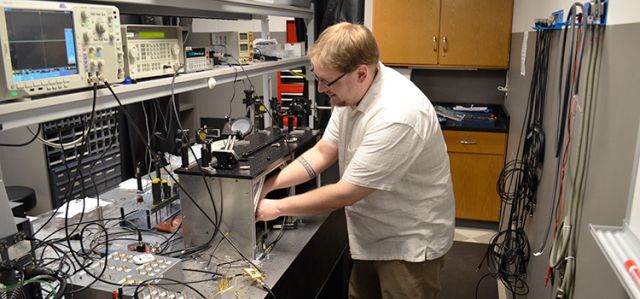Target-in-the-loop Beam Control: Basic Considerations for Analysis and Wavefront Sensing
Document Type
Article
Publication Date
1-1-2005
Publication Source
Journal of the Optical Society of America A
Abstract
Target-in-the-loop (TIL) wave propagation geometry represents perhaps the most challenging case for adaptive optics applications that are related to maximization of irradiance power density on extended remotely located surfaces in the presence of dynamically changing refractive-index inhomogeneities in the propagation medium. We introduce a TIL propagation model that uses a combination of the parabolic equation describing coherent outgoing-wave propagation, and the equation describing evolution of the mutual correlation function (MCF) for the backscattered wave (return wave). The resulting evolution equation for the MCF is further simplified by use of the smooth-refractive-index approximation. This approximation permits derivation of the transport equation for the return-wave brightness function, analyzed here by the method of characteristics (brightness function trajectories). The equations for the brightness function trajectories (ray equations) can be efficiently integrated numerically. We also consider wave-front sensors that perform sensing of speckle-averaged characteristics of the wave-front phase (TIL sensors). Analysis of the wave-front phase reconstructed from Shack–Hartmann TIL sensor measurements shows that an extended target introduces a phase modulation (target-induced phase) that cannot be easily separated from the atmospheric-turbulence-related phase aberrations. We also show that wave-front sensing results depend on the extended target shape, surface roughness, and outgoing-beam intensity distribution on the target surface. For targets with smooth surfaces and nonflat shapes, the target-induced phase can contain aberrations. The presence of target-induced aberrations in the conjugated phase may result in a deterioration of adaptive system performance.
Inclusive pages
126-141
ISBN/ISSN
1084-7529
Copyright
Copyright © 2005, Optical Society of America
Publisher
Optical Society of America
Volume
22
Issue
1
Peer Reviewed
yes
eCommons Citation
Vorontsov, Mikhail and Kolosov, Valeriy V., "Target-in-the-loop Beam Control: Basic Considerations for Analysis and Wavefront Sensing" (2005). Electro-Optics and Photonics Faculty Publications. 104.
https://ecommons.udayton.edu/eop_fac_pub/104
COinS




Comments
One print or electronic copy may be made for personal use only. Systematic reproduction and distribution, duplication of any material in this paper for a fee or for commercial purposes, or modifications of the content of this paper are prohibited.
Permission documentation on file.